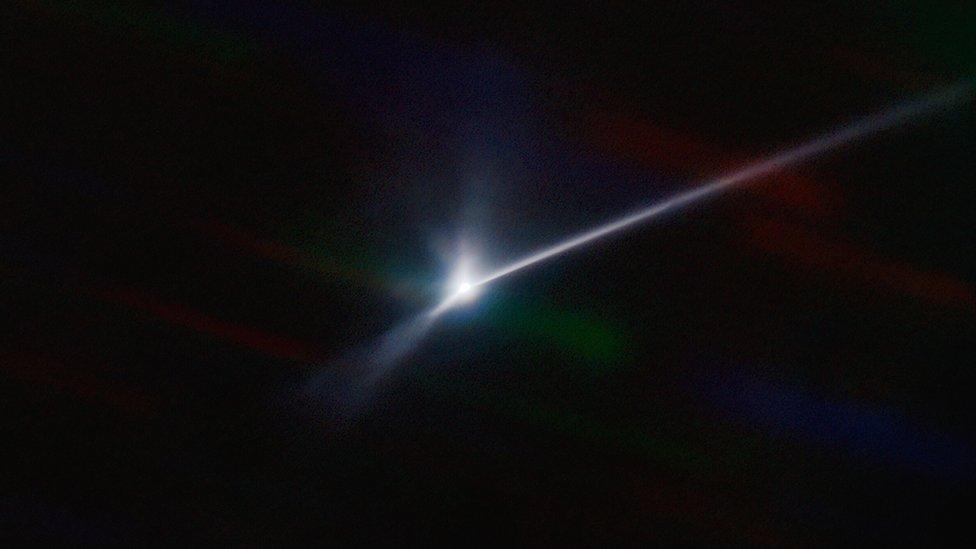Asteroid leaves 10,000 km trail after crash with Nasa probe
- Published
- comments

An asteroid smashed into by a Nasa probe has left a whopping10,000 kilometre (6,200 miles) long trail of broken rock and debris following the collision!
The deliberate crash was an experiment by the US's national space agency to see if an asteroid's course could be changed by a collision with a probe.
Nasa celebrated the collision of their especially designed, multi-million dollar Dart probe into the asteroid, known as Dimorphos, last week.
Following the crash, a picture of the asteroid was captured by a telescope in Chile which showed an incredibly long, bright tail behind it.
Nasa: US space agency crashes spacecraft into asteroid
"It is amazing how clearly we were able to capture the structure and extent of the aftermath in the days following the impact," said Teddy Kareta, one of the astronomers observing Dimorphos.
Scientists at Nasa are still working to figure out whether their experiment was actually a success and the asteroid changed course.
Their experiment was conducted on an asteroid that is 11 million miles away, with no danger of hitting the Earth.
Nasa are now closely following the orbit of the Dimorphos asteroid around another asteroid called Didymos to see if its direction has been changed by the probe.
An asteroid is a small rocky object that orbits the Sun
These become meteors when they burn up in the Earth's atmosphere
They come in lots of different sizes. Vesta is one of the biggest at 530km (330 miles) in diameter - that's bigger than the distance from London to Paris!
If Dimorphos' path has been changed, this could mean that human-made probes could be used to alter the direction of other similarly sized asteroids.
It's hoped that this technology could be used to protect Earth from a collision with an asteroid if one was to head towards the Earth in the future.
Director of Planetary Science at Nasa, Dr Lori Glaze, has said she is pleased with the mission so far, saying "we potentially have the capability to protect ourselves from something like a dangerous hazardous asteroid impact."
"What an amazing thing; we've never had that capability before," she told reporters.
- Published27 September 2022
- Published13 February 2023
- Published7 March 2018
